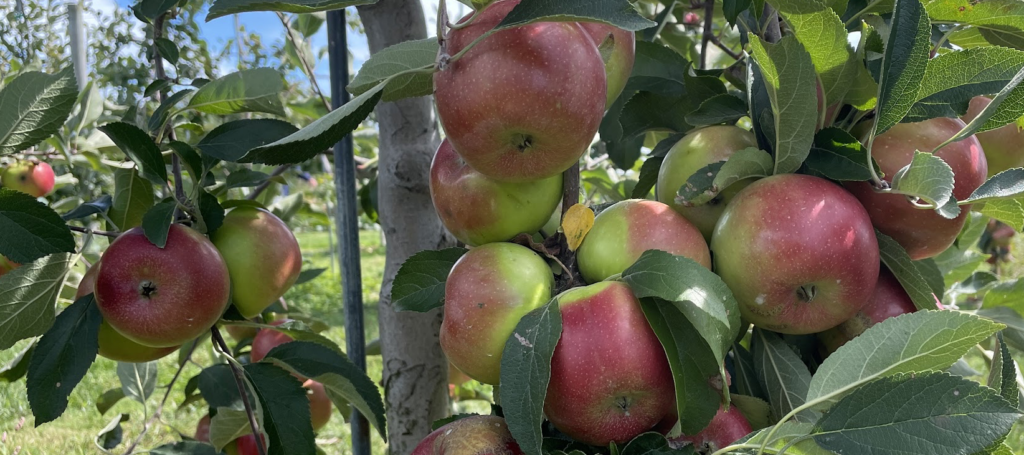Tree pruning sealer is a product used to cover pruning cuts on trees. It is meant to create a barrier that prevents pathogens and pests from entering the tree, thereby promoting healing and preventing decay. However, there are several reasons why tree pruning sealer should not be used.
What Is Tree Pruning Sealer?
Tree pruning sealer is a thick, viscous substance that is typically applied to the exposed areas of freshly cut tree branches or limbs. It is often marketed as a protective coating that helps trees heal faster and prevents infections. The sealer is usually composed of a mixture of waterproof materials such as petroleum or acrylic-based substances, mixed with additives that claim to promote healing. It is available in different forms, such as sprays, gels, or paints, and is typically applied with a brush or spray bottle.
When a tree branch or limb is pruned, it creates an open wound on the tree. These wounds can be susceptible to various pathogens, including fungi and bacteria, which can cause infections and decay. Tree pruning sealer is designed to create a barrier over these wounds, preventing the entry of harmful organisms and reducing the risk of infection.
One of the key components of tree pruning sealer is its waterproof nature. The waterproof materials used in the sealer form a protective layer over the cut surface, preventing water from entering the wound. This is important because excess moisture can create a favorable environment for fungal growth and decay. By sealing off the wound, tree pruning sealer helps to keep the area dry and promotes faster healing.
In addition to its waterproof properties, tree pruning sealer often contains additives that are believed to aid in the healing process. These additives can include natural substances like tree resins or synthetic compounds that stimulate the tree’s natural defense mechanisms. By applying these additives to the wound, the sealer claims to enhance the tree’s ability to heal itself and form new tissue over the cut surface.
Tree pruning sealer is available in different forms to suit various applications. Sprays are commonly used for larger wounds or areas that are difficult to reach, providing a convenient and even application. Gels or pastes, on the other hand, are thicker in consistency and are ideal for smaller cuts or wounds that require more precise coverage. Paints are another option, offering a thicker and more durable coating that can withstand harsh weather conditions.

When applying tree pruning sealer, it is important to follow the manufacturer’s instructions carefully. The sealer should be applied to clean and dry surfaces, ensuring good adhesion and effectiveness. It is recommended to remove any loose bark or debris from the wound before applying the sealer, as this can interfere with the sealing process.
While tree pruning sealer is widely used and marketed as a beneficial product, its effectiveness and necessity are still debated among arborists and tree care professionals. Some argue that trees have their own natural defense mechanisms and can heal without the need for additional products. Others believe that tree pruning sealer can provide an extra layer of protection, particularly for certain tree species or in specific environments.
Common Misconceptions About Tree Pruning Sealer
Tree pruning sealer has been a topic of debate among arborists and tree enthusiasts for many years. While some believe it is necessary for the health of their trees, there are several common misconceptions surrounding its use. Let’s delve deeper into these misconceptions and explore the truth behind them.
One of the most prevalent misconceptions is that tree pruning sealer prevents diseases and pests from entering the tree. It is true that applying a sealer creates a physical barrier, but this alone does not guarantee protection against pathogens or insects. In fact, in some cases, the sealer can create an environment that promotes fungal or bacterial growth. Trees have their own natural defense mechanisms that allow them to fight off diseases and pests. They produce chemicals and resins that act as a deterrent, and their bark acts as a protective shield. While tree pruning sealer may provide some additional protection, it should not be relied upon as the sole defense against these threats.
Another misconception surrounding tree pruning sealer is that it accelerates the healing process. Many people believe that by applying a sealer to pruning cuts, they are helping the tree heal faster. However, research has shown that trees have their own remarkable ability to heal on their own. When a tree is pruned, it undergoes a process called compartmentalization. This process involves the tree isolating the wounded area and forming specialized cells to seal off the wound. These cells gradually grow and multiply, creating a protective barrier that prevents decay and further damage. This natural healing process is highly effective and does not require the use of additional substances like tree pruning sealer.
It is important to note that the use of tree pruning sealer is not entirely without merit. In certain situations, such as when dealing with large pruning wounds or in areas with high disease pressure, a sealer may provide some benefit. However, it should be used judiciously and in conjunction with proper pruning techniques. It is always recommended to consult with a certified arborist or tree care professional before deciding to use a tree pruning sealer.
In conclusion, while tree pruning sealer has its proponents, it is important to separate fact from fiction when considering its use. The misconceptions surrounding its effectiveness in preventing diseases and pests, as well as its ability to accelerate the healing process, have been debunked by scientific research. Trees have their own natural defense mechanisms and healing processes that make them resilient and capable of recovering from pruning cuts. Understanding these facts will help ensure that you make informed decisions when it comes to tree care and pruning.
Potential Health Risks Associated with Tree Pruning Sealer
Using tree pruning sealer can pose potential health risks to both trees and humans. Some formulations contain toxic chemicals that may harm the tree’s natural healing process. The sealer can trap moisture inside the wound, creating a moist environment that encourages the growth of fungi and bacteria. This can lead to decay and further damage to the tree.
In addition, when applying tree pruning sealer, there is a risk of inhaling or coming into contact with harmful substances. Some sealers contain volatile organic compounds (VOCs), which can be toxic to humans and animals. Prolonged exposure to these compounds can cause respiratory problems, skin irritation, or even more severe health issues.
How Tree Pruning Sealer Can Damage Trees
Contrary to its intended purpose, tree pruning sealer can actually cause more harm than good. By creating a sealing layer over the pruning cut, the sealer can trap moisture and prevent the natural drying-out process. This trapped moisture can promote the growth of bacteria and fungi, leading to rot and decay within the tree.
In addition, the sealing properties of the sealer can inhibit the natural ability of the tree to compartmentalize the wound. When a tree is pruned, it undergoes a process called “walling off,” where it forms specialized cells to seal the exposed area. By applying a sealer, this natural process is disrupted, and the tree may struggle to effectively seal off the wound, leaving it more vulnerable to infections.
The Potential Environmental Impact of Tree Pruning Sealer
Using tree pruning sealer can also have negative impacts on the environment. Some sealers contain chemicals that are harmful to soil health and can leach into groundwater. These chemicals may contaminate water sources and cause harm to nearby plants and organisms. Additionally, the production and disposal of tree pruning sealers contribute to environmental pollution.
Understanding the Dangers of Tree Pruning Sealer
Considering the potential harm it can cause to trees, humans, and the environment, it is important to understand the dangers of tree pruning sealer. The use of sealer is unnecessary, as trees have their own mechanisms to heal and protect themselves after pruning. Allowing the tree to naturally compartmentalize and form a protective barrier is the best way to ensure its long-term health and vitality.
How to Properly Prune Trees with No Sealer
Pruning trees without using sealer is the recommended approach for maintaining tree health. To properly prune a tree:
- Start by identifying the branches that need to be removed. Focus on dead, damaged, or diseased branches, as well as those that are crossing or rubbing against each other.
- Use clean and sharp pruning tools to make clean cuts. Angle the cut just outside the branch collar, which is the swollen area where the branch meets the trunk or a larger branch. Avoid leaving stubs or making flush cuts.
- After pruning, monitor the tree for any signs of decay or disease. If necessary, consult an arborist for professional advice.
Remember, the natural healing process of trees is powerful and effective. Allowing them to heal on their own without the use of unnecessary sealers promotes their overall health and resilience.

